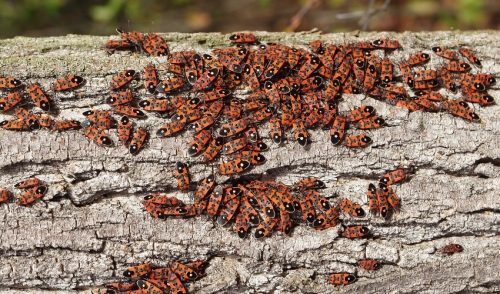
Chinch Bug Solutions
Chinch bugs, insects in the family Blissidae, are troublesome lawn and farm pests. Fortunately, the better you know these bugs, the better prepared you can be to solve the problems they present.
About Chinch Bugs
These bugs are tiny, ranging from 1/8 to 1/4 of an inch long with black, white, red and brown coloration. They are native and naturally-occurring from southern Canada to Central America, typically in hot, dry, sunny regions. Though individual chinch bugs have a lifespan of less than one year, they can do plenty of damage to grass and crops in that time.
These bugs suck sap from growing plants, causing the plants to wilt and die. Chinch bug damage may appear to be dry patches or drought, but additional watering will not help affected areas recover. These bugs can feed on a wide variety of plants, but are particularly interested in wheat, corn, rye, barley and oats, as well as turf grasses such as Kentucky bluegrass, ryegrass, fescues, St. Augustine grass and zoysia grass. The damage is generally most noticeable from late summer through early fall, when the populations of chinch bugs are highest, but problem areas can be seen even in early spring in severe cases.
Controlling Chinch Bugs
Because chinch bugs are widespread, native insects, they can be difficult to eradicate completely. There are a number of tactics, however, that can minimize intrusions by these unwelcome bugs. Farmers whose crops are inundated by chinch bugs can switch to crops that are less favorable to these insects, such as soybeans, or rotate field use to discourage the pests. If chinch bugs are invading a lawn, however, homeowners have to use different options.
- Be sure the pests are properly identified. Many different lawn problems, including improper watering, fungus, root rot and even other insects can show similar signs to chinch bug infestations. Without proper identification and diagnosis of the problem, it is impossible to take the right steps to end the difficulties chinch bugs cause.
- Dethatch and aerate the lawn every spring and fall. Chinch bugs lay eggs and overwinter in deep thatch, and if that material is removed, the lawn will not be as friendly or favorable for these insects to propagate.
- Mow turf appropriately, keeping it to the ideal height and never removing more than one-third of the blade height at each mowing. This will encourage a strong, deep root system while minimizing stress on the turf, which will help it be more resistant to chinch bugs as well as other pests and lawn problems.
- Irrigate the lawn properly, checking regularly for ideal sprinkler function and adjusting watering schedules seasonally or during periods of rain or drought. Both over-watering and under-watering stress turf, making it more susceptible to insect infestations.
- Remove leaf litter in the fall and avoid leaving fallen leaves and other debris on the lawn through the late fall and winter. Adult chinch bugs overwinter in this material and will emerge in spring to lay their eggs. If the material is removed, the chinch bug population will decrease.
- Shade the lawn if possible. Chinch bugs prefer open, sunny areas with plenty of direct sunlight, but areas of dappled or partial shade are less insect-friendly. Consider adding trees or shrubs to provide suitable shade in vulnerable areas of the lawn and landscape.
- Insecticides can be used to control chinch bugs, but these insects can be very resistant to chemical treatments and several applications may be necessary to remove severe infestations. Use insecticides specifically formulated for chinch bugs, and follow all application instructions carefully for the best results. Avoid overtreating affected areas, and confine insecticide applications only to where they are needed.
It is difficult but not impossible to control chinch bugs, and the more tactics you use to minimize their intrusiveness, the more successful you will be in solving the problems these unwanted bugs can cause.





